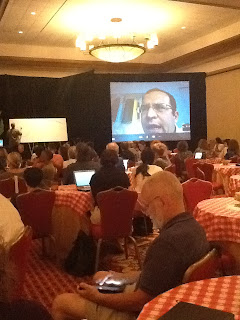Four schools, including
Tahoma Junior High, were honored today by State Superintendent Randy Dorn for
their commitment to environmental leadership. The award-winning schools,
honored at an award ceremony at Bainbridge Island’s IslandWood, all incorporate
health and energy management into academics through connections between
science, technology, engineering and math, civic skills and green career
pathways.

Today’s recognition was an extension of a national competition, open to public and private schools, at the U.S. Department of Education, which named finalists from several states as “Green Ribbon Schools.” Washington had three public-school winners and one private-school winner among 72 schools that won the national award:
Camelot Elementary, Federal Way SD
Secondary Academy for Success, Northshore SD
Tahoma Jr High, Tahoma SD
The Overlake School (private)
“Their enthusiasm, hard work and creativity
demonstrate that we can provide an excellent environment for a well-rounded
education with an emphasis on addressing the challenges and opportunities of
the 21st century,” Dorn said. “Criteria for this award were rigorous. I applaud
the winners for their dedication to making the world a better place.”
State-level awards were
given in three categories:
Pillar 1: Environmental Impact and Energy Efficiency
Bryn Mawr Elementary School, Seattle SD
Creekside Elementary School, Sammamish SD
Issaquah Middle School, Issaquah SD
The Jewish Day School, Bellevue SD
Skyridge Middle School, Camas SD
Pillar 2: Healthy School Environments
Bertschi School, Seattle SD
Tahoma Sr. High, Tahoma SD
Pillar 3: Environmental and Sustainability Education
The Evergreen School, Shoreline SD
Glacier Park Elementary, Tahoma SD
Sacajawea Elementary, Vancouver SD
Skyview Jr. High, Bothell SD
The
U.S. Department of Education Green Ribbon Schools award honors schools that are
exemplary in reducing environmental impact and costs, improving the health and
wellness of students and staff and providing effective environmental and
sustainability education. The program is part of a broader effort by the
Department of Education to identify and disseminate knowledge about practices
that are proven to result in improved student engagement, higher academic
achievement and graduation rates, and workforce preparedness.
For more information
National Green Ribbon website
National Green Ribbon award-winning applications
Washington Green Ribbon website
National Green Ribbon website
National Green Ribbon award-winning applications
Washington Green Ribbon website





















